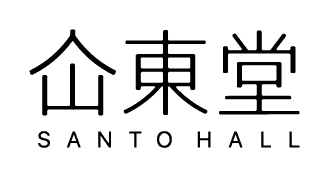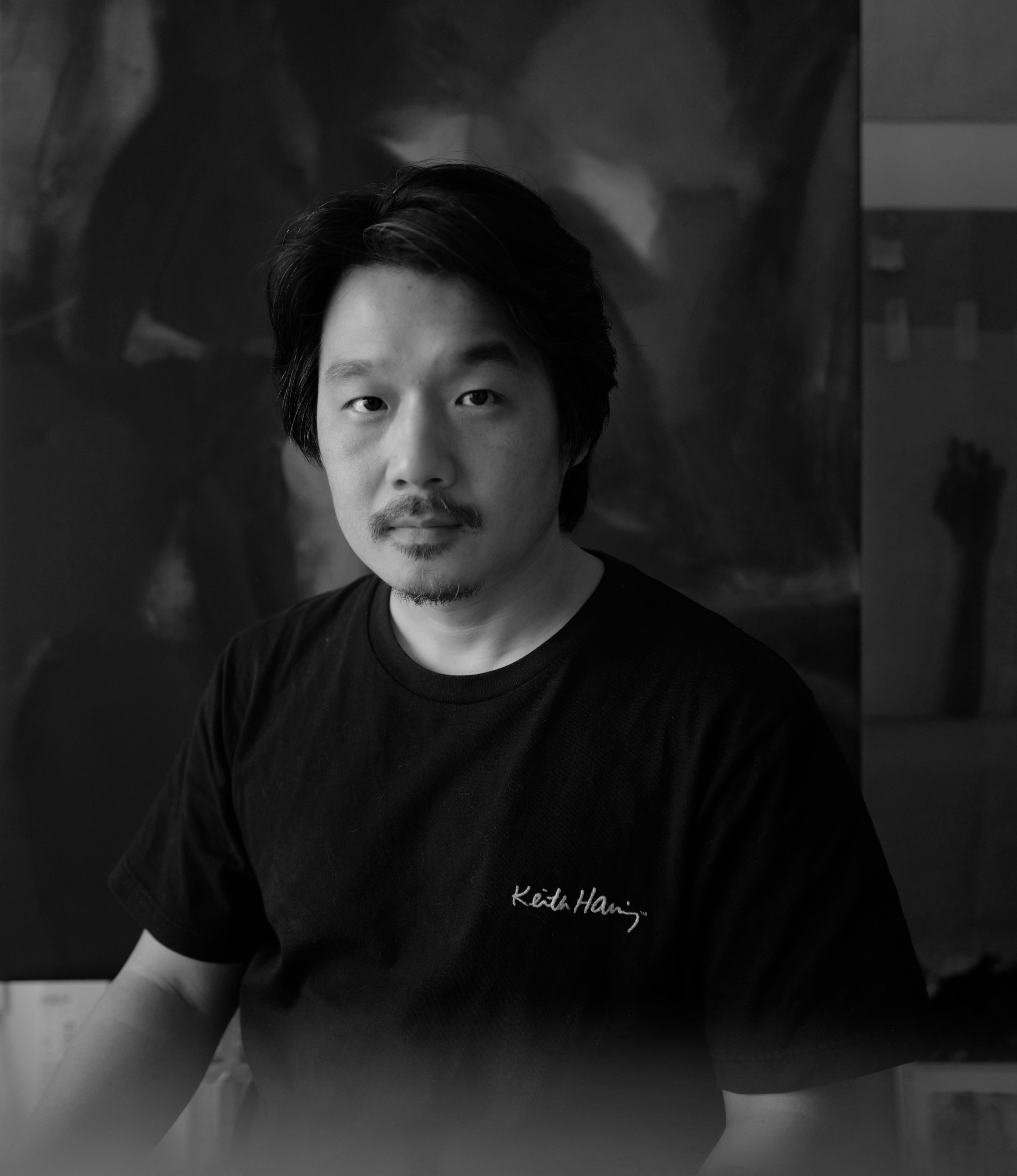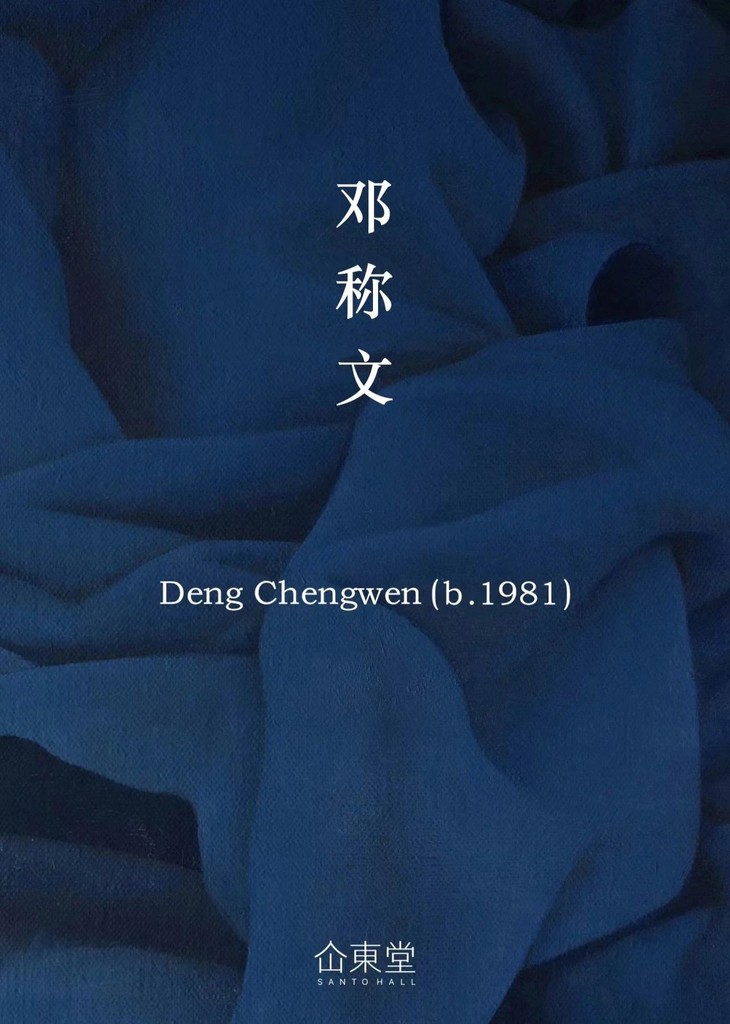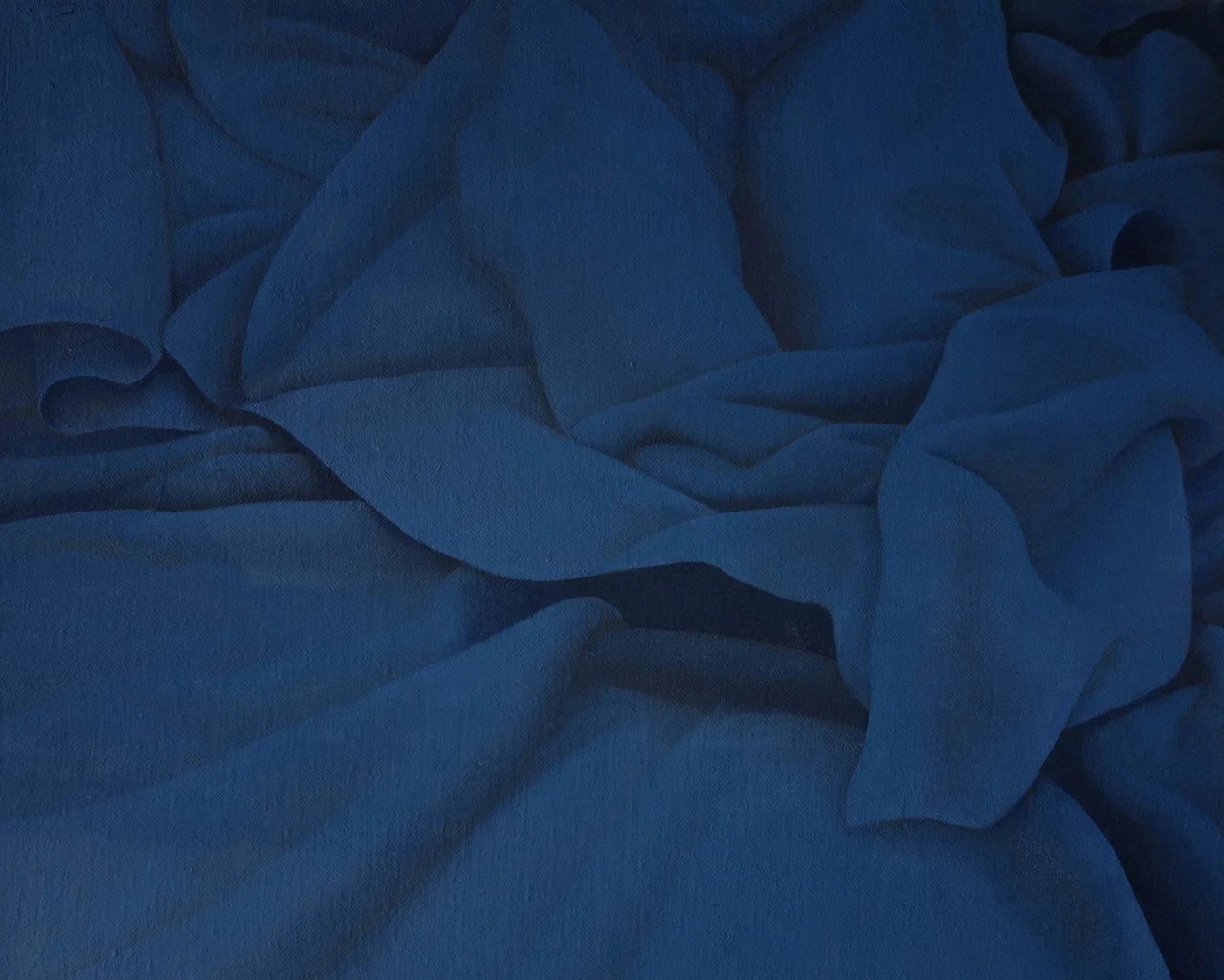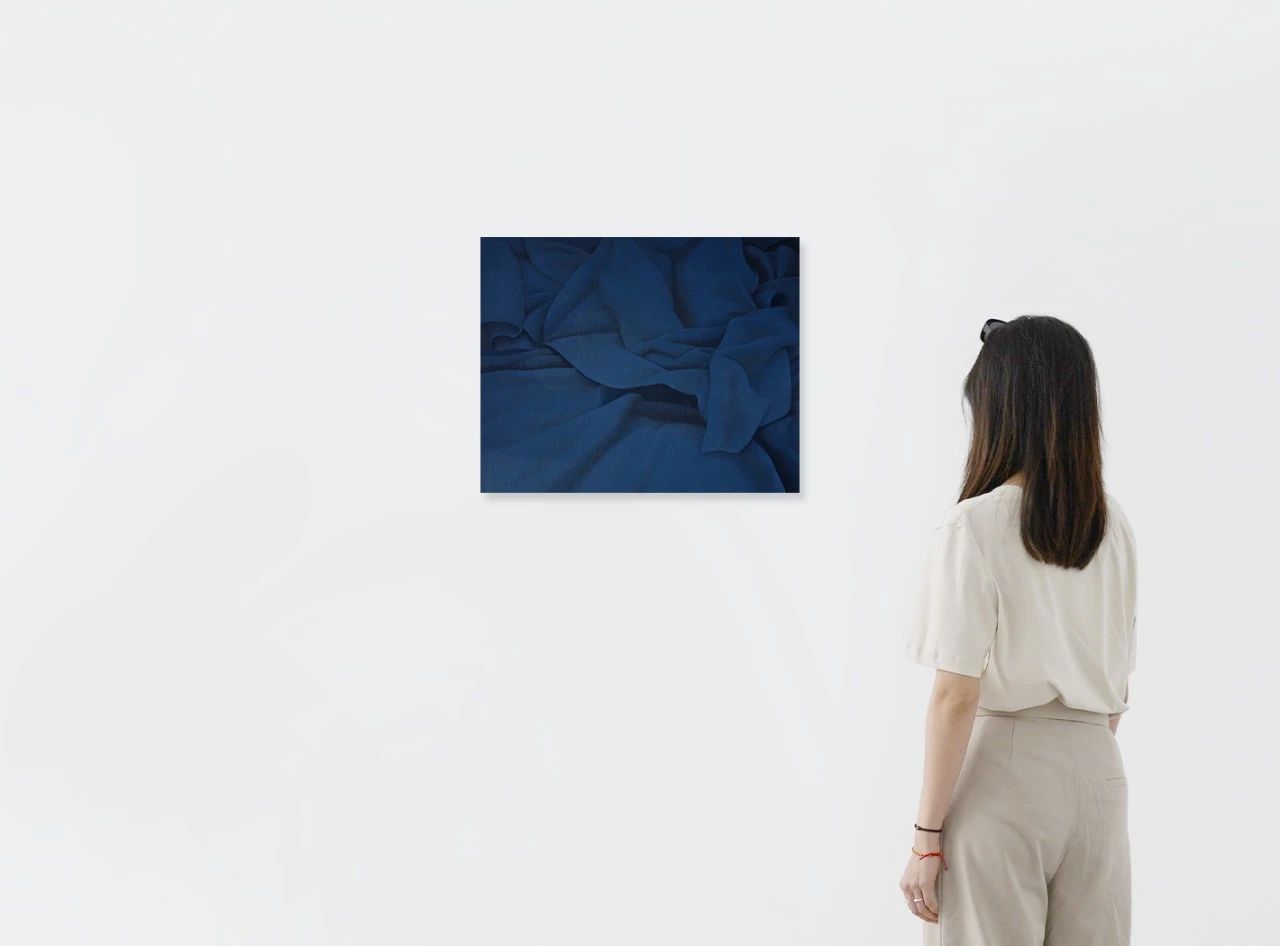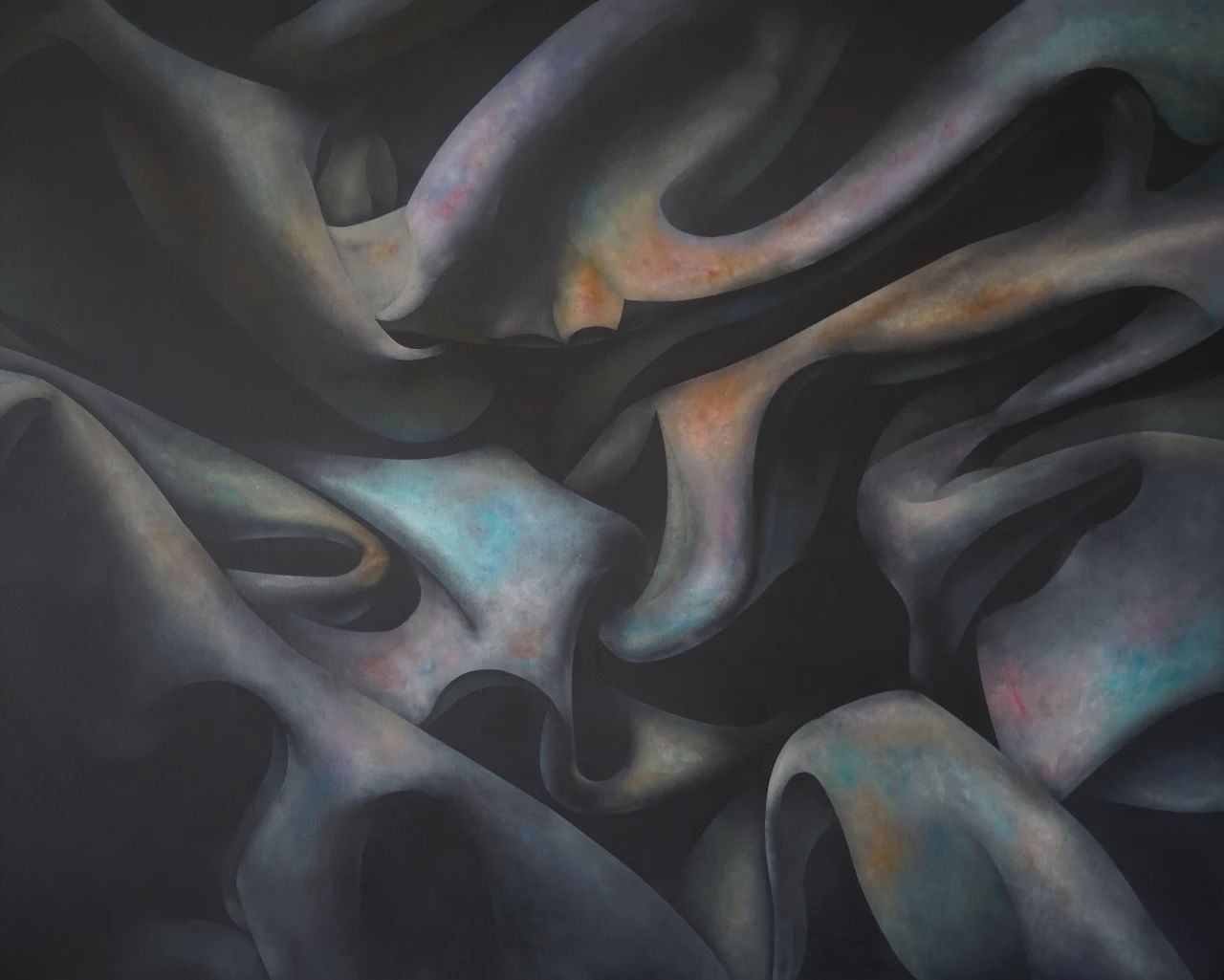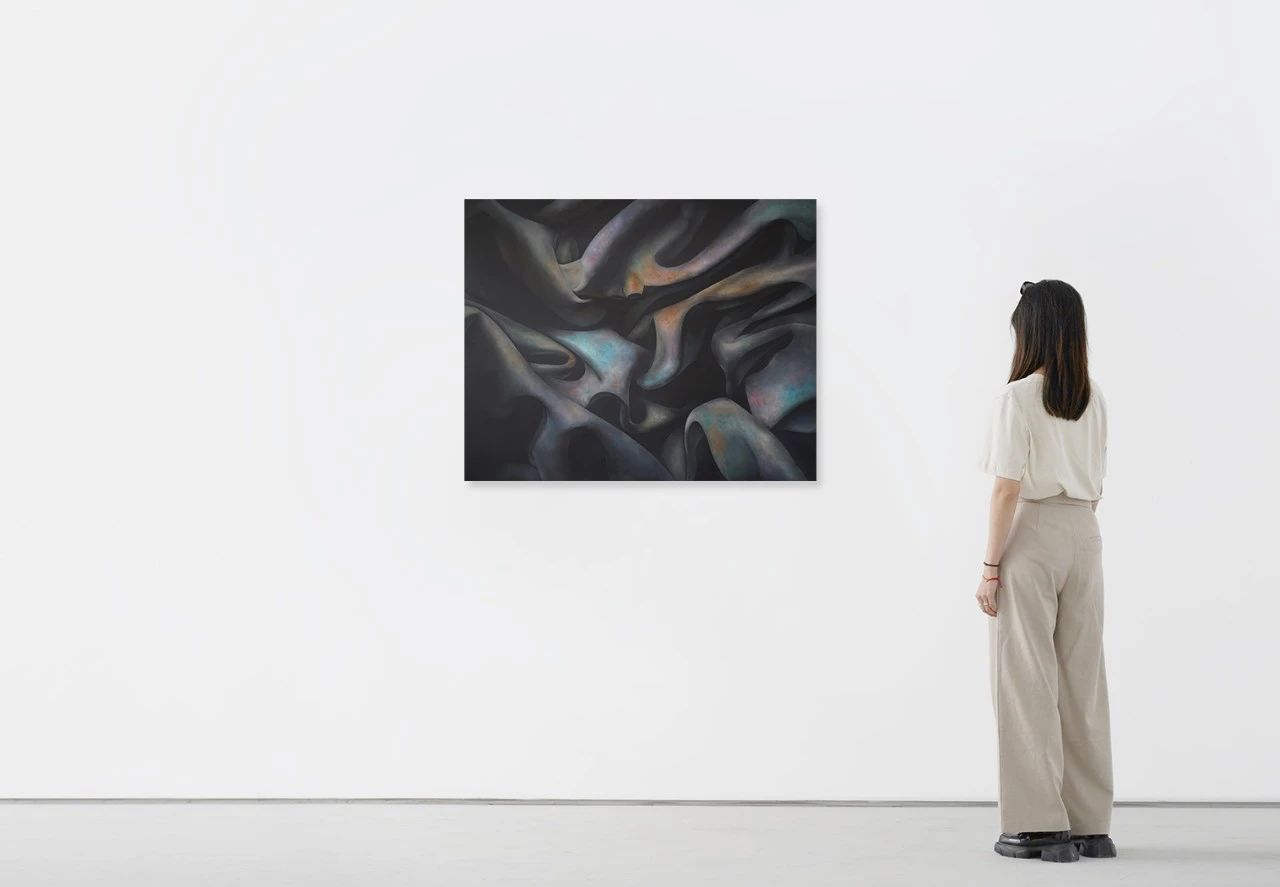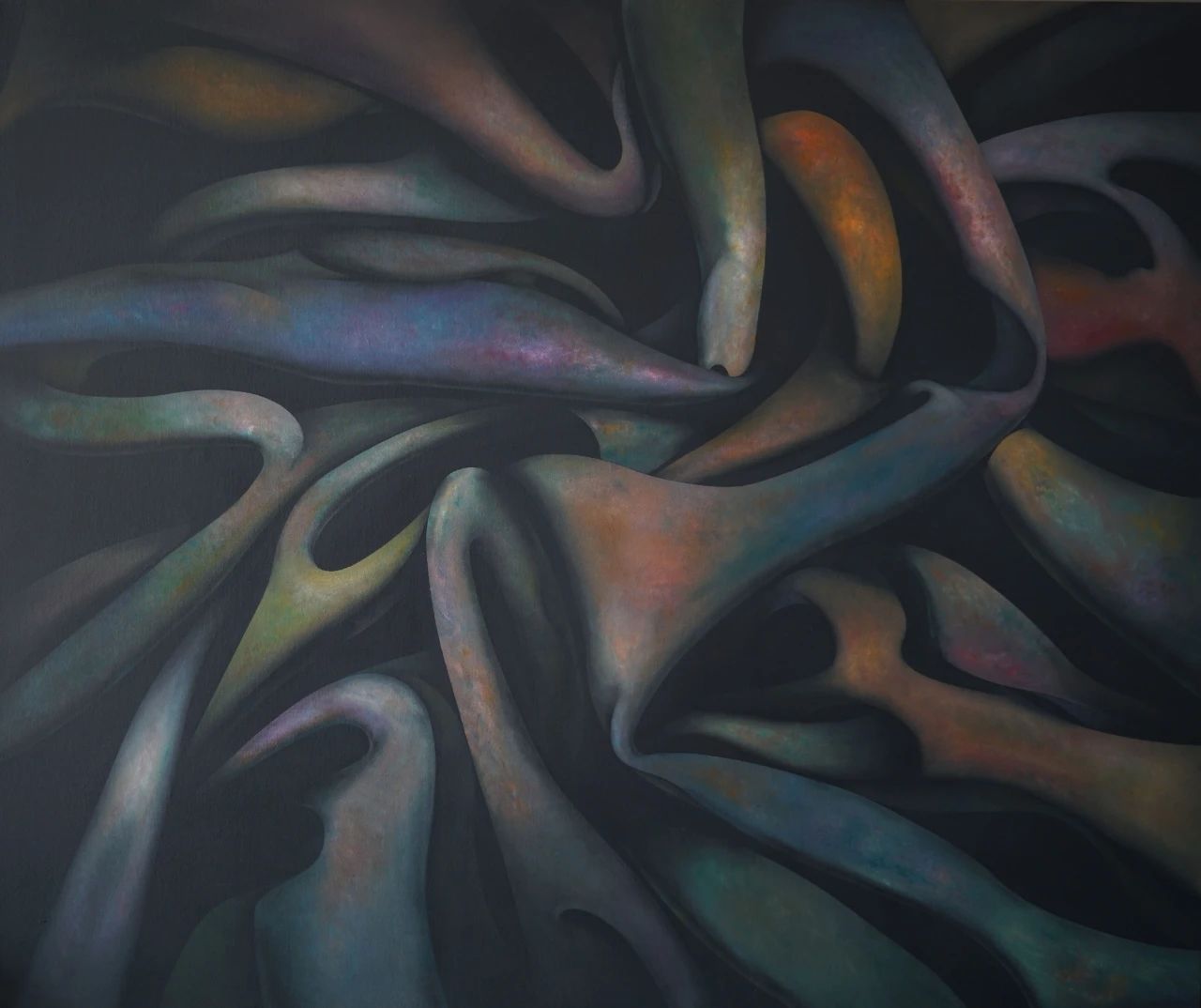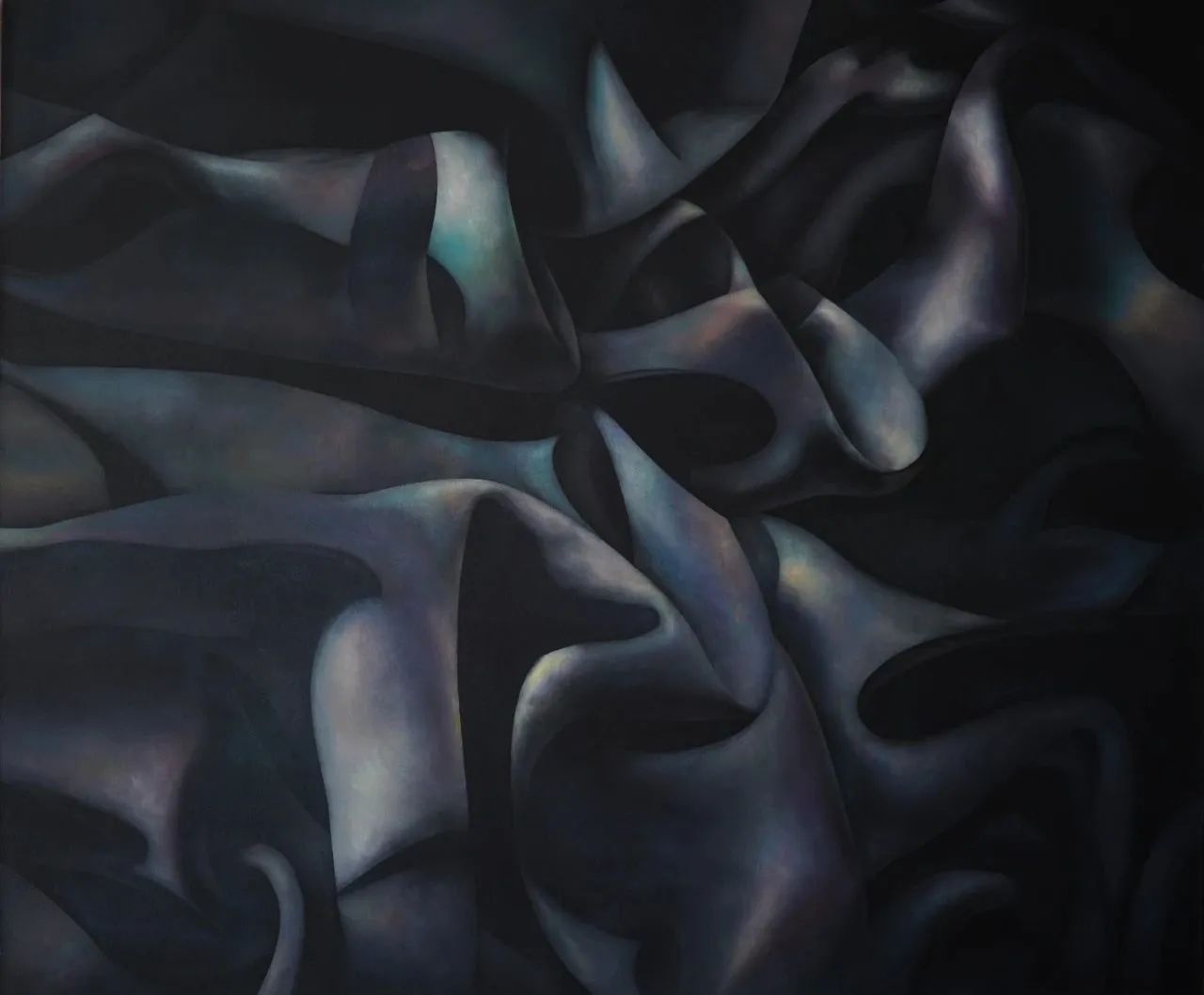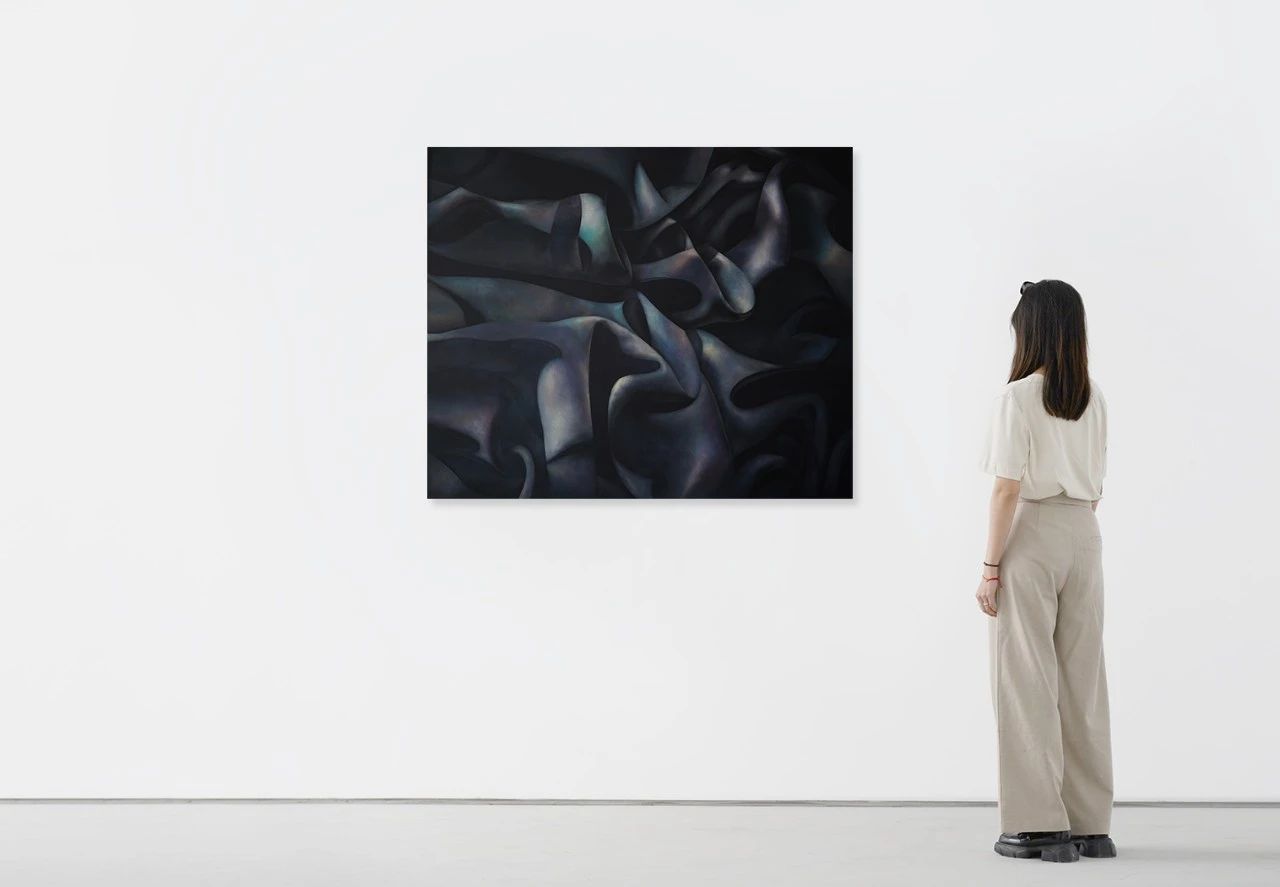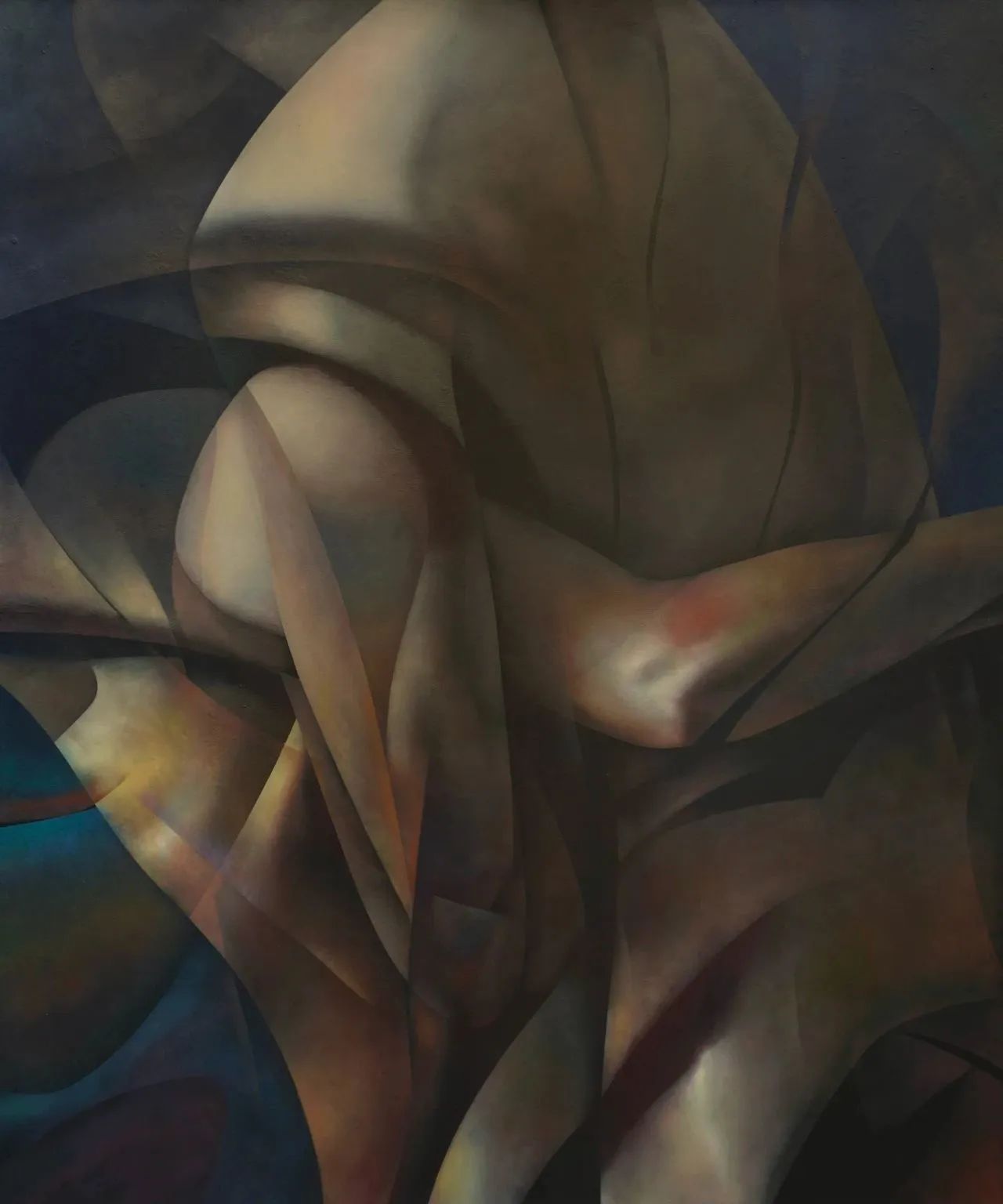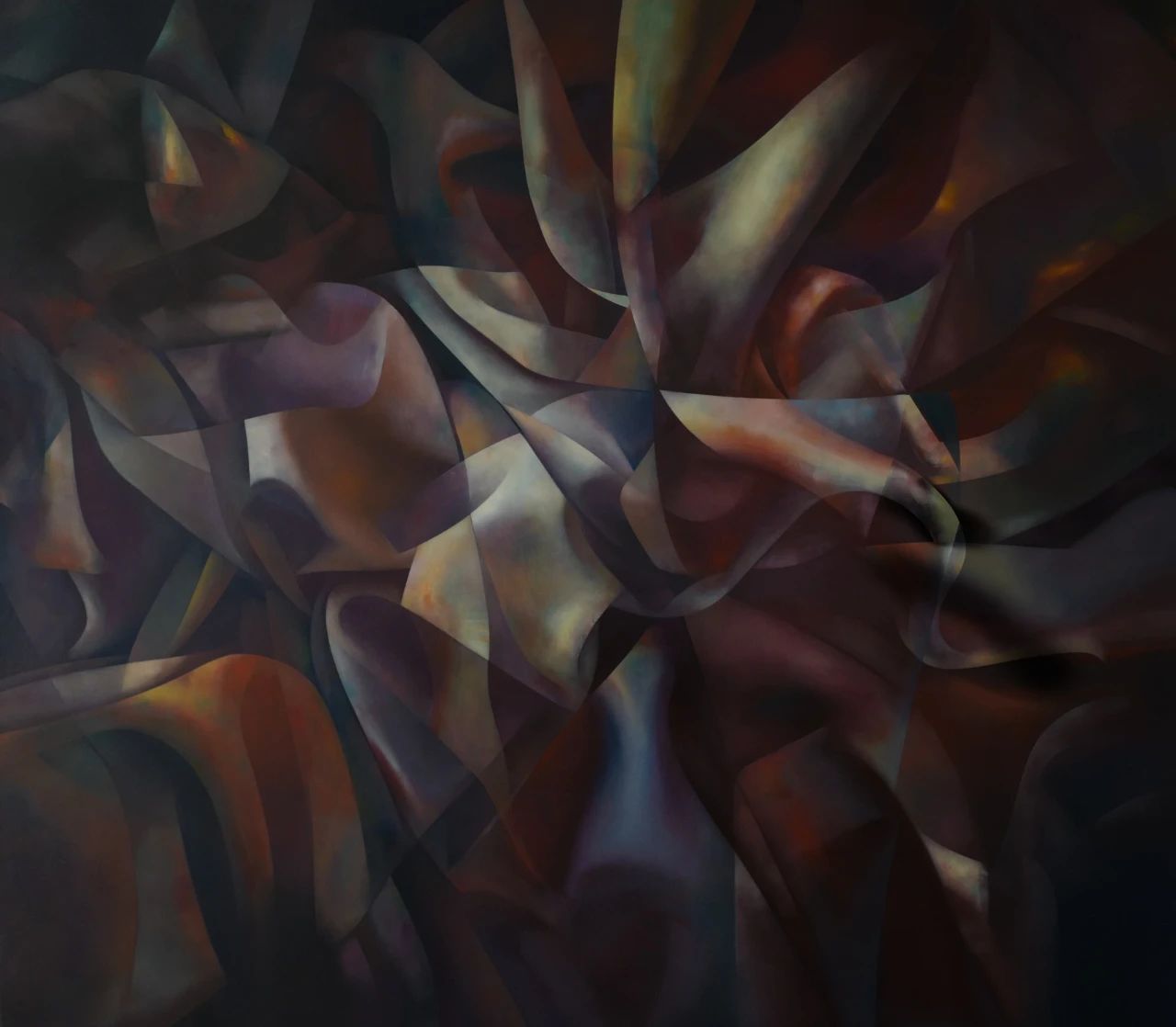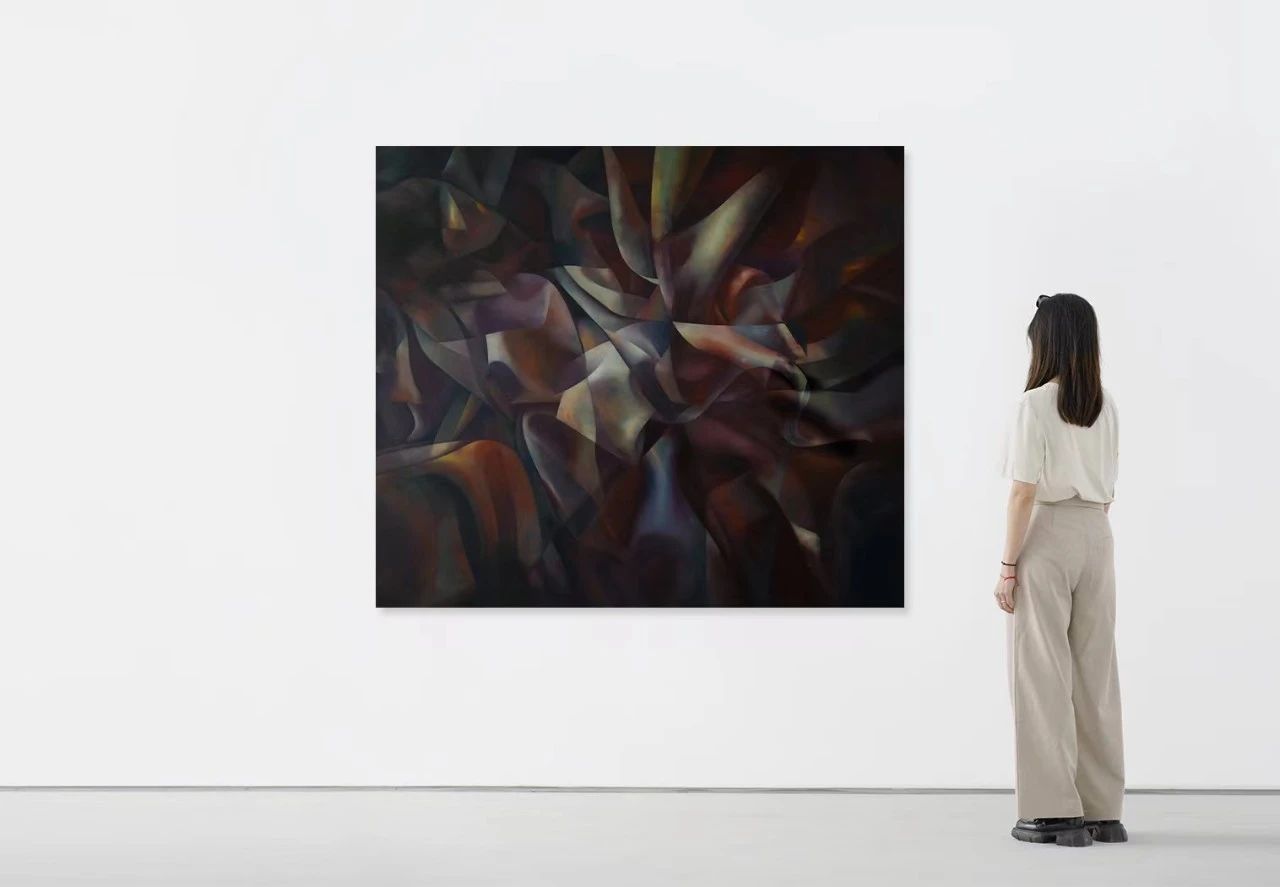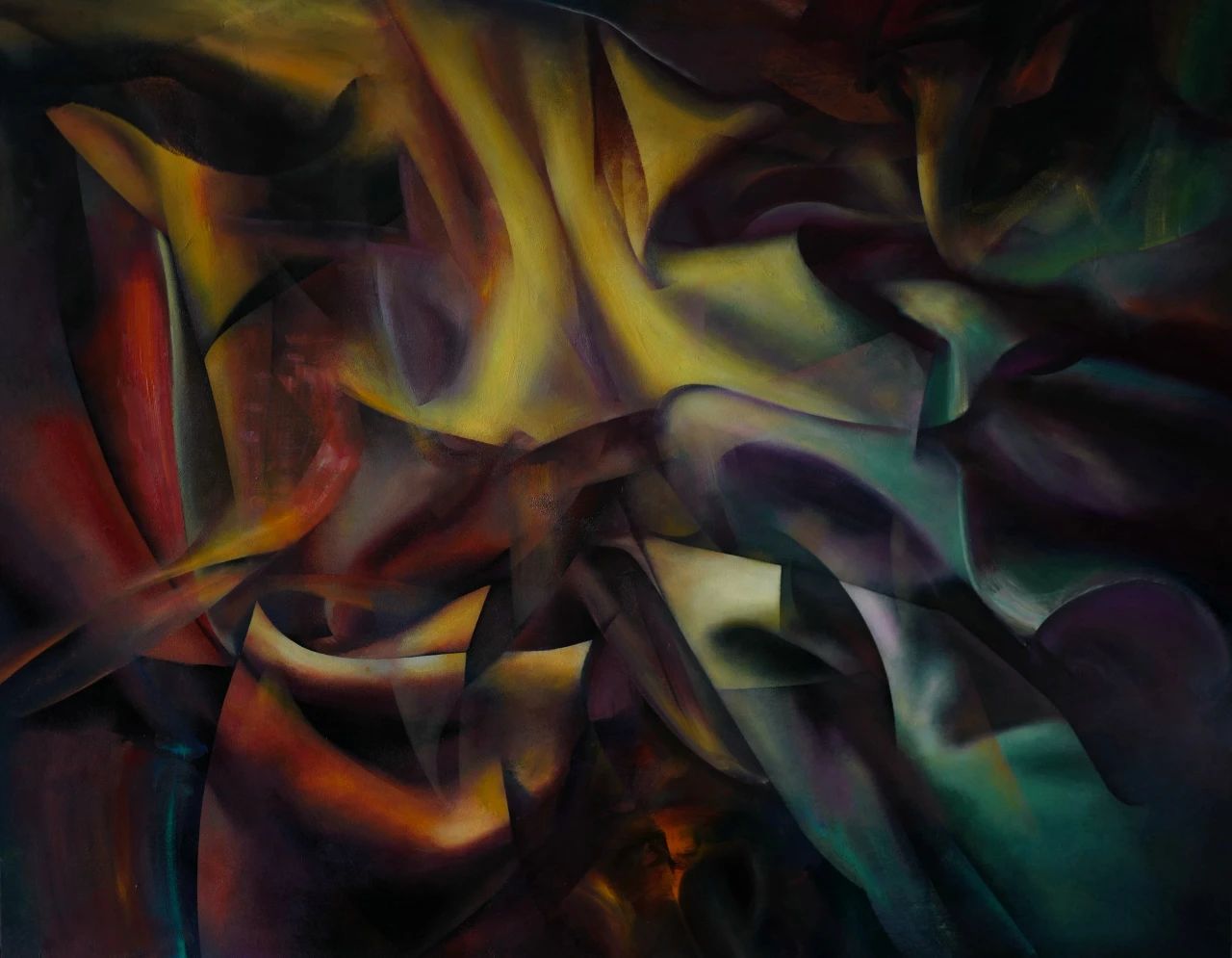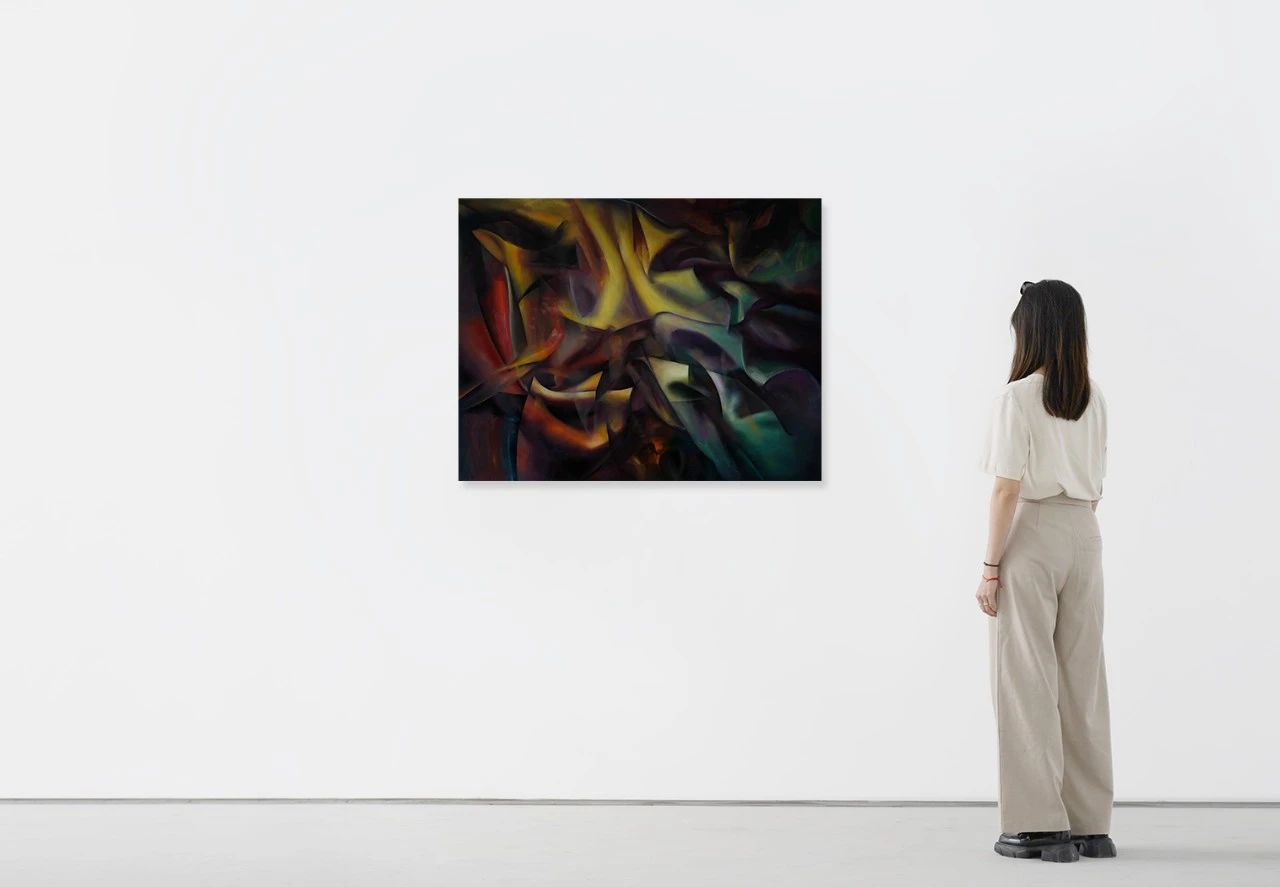回到绘画本身
Back to the Painting Ltself
文/邵光华
近几年来的绘画实践中,邓称文围绕着内容、材料、形式、概念进行了相当多元的探索,逐步完成绘画范式的转换:从以"盲行"系列为代表的主题化叙事、具象化表达,走向一种无主题、非具象的画面语言,超越基于再现机制的感知经验,并将绘画的基本形式加以提纯,试图藉此"回到绘画本身"。
如同现象学宣称"回到事物本身",邓称文的"回到绘画本身",需要先行"悬置"绘画旧有的二元再现逻辑。从起点处开始,绘画就不是对客观物象的再现与解释,也没有所谓的写实:凡所有象,皆是抽象;正在进行的"形态"系列中,他更是摆脱了具体物象对于绘画的制约,色彩、线条、明暗、肌理、节奏、气息.....这些最基础的绘画语言经由艺术家的内在意识,在画布上碰撞、组合、生成,向着更丰富的可能性敞开。
无题,2021,布面油画,50x40cm
无题,场景
"形态"系列作品是基于邓称文日常观察事物所拍摄的照片,角落里一团用过的毛巾,以其形态质感天然的流动性与不确定性,成为"形态"系列作品创作的起点。在剥离与实际物质之间的关联后,平面化、抽象化带来了形而上的新绘画的趣味。"毛巾"被反复揉搓、染色、撕裂、融合、变形,原本的物性荡然无存,被提炼出的意识和图象却如数学函数般,以更纯粹的方式存在着。
形态No.1,2022,布面油画,100x80cm
形态No.1,场景
经历过曾经的具象绘画阶段后,邓称文觉得也许只有不对画面做过多的预设,才更可能发掘出绘画本身的潜能。抛弃具体物象,以现象学般不解释的态度,画家从主客交融的意识状态中开始了在画布上的工作。
面对着空白的画布,他并没有感到"自由得一无所有",而是看到了内在意识的自由显现。随机选择几种颜色,然后任意地调配,不拘于滚刷、刮刀还是画笔,先跟着感觉涂抹出基本的形态和色调,之后的工作更多地是一种顺势而为,直到抵达某种平衡状态,画面得以暂时性地告一段落。
形态No.3,2022,布面油画,120x100cm
形态No.3,2022,形态No.3,场景
这是一种从"无意"走向"有意"的过程。当外部的限制被取消,内部的精神便开始接管画面,随之而显现的便是艺术家的整体存在。"形态"系列中,艺术家与画面需要被一齐考量。决定画面的,并非只是名为"邓称文"的自由意志,更是那些不可见的力量——"他"所接纳吸收的美学传统或者只是前晚的坏天气或今早的宿醉。油画,120x100cm
形态No.4,2023,布面油画,120x100cm
形态No.4, 场景
线条起于何处,又在哪里结束或转折?如何处理色彩的过渡,并让它呈现出应有的效果?怎么把控某一区域的坚硬或柔软的感觉?这些都是画面生成的过程中,自然会遭遇的问题。
对于画家来说,涌现在画面上的意识也非天然成立,需要考察其来源,确定其形态,运用审美、知觉、传统和理性....乃至整体存在去进行删除和填补,在反复修改中驱逐提前到场的意义,即使画中的一切都已被事先给定,但仍然需要一番努力才能实现。
融合,2022,布面油画,120x100cm
融合,场景
以"形态"命名,并不意味这批作品只是关于形态的绘画研究。形态只是作为绘画得以进行的前题而存在的,绘画本体语言的自身呈现则更重要,最终会通向一种精神性、超验性的领悟,比如对观看的重新定位、对秩序的反复寻求、对传统的再度辨认等等......邓称文试图通过对"形态"的研究与展现,让画面成为意识状态的自我呈现,并以一种细腻、平衡的风格将它描绘出来。
语言与边界No.3,2023,布面油画,150x140cm
语言与边界No.3,场景
在近期以《语言与边界》命名的系列作品中,色彩与线条更显繁复,坚实的形体上似有若无的虚影一晃而过,又终结于画面的深度之中,轻重之间形成巧妙互文;当绘画成为意识呈现的本体,绘画语言的边界与意识的边界得以同时显现出来,画家需要在变动中把握到契合点,又在对比中确定各自边界。
正如同格哈德·里希特收浩瀚大海于一抹蓝色,邓称文笔下的形态变化,从绘画的基点出发以"唯我论"的姿态,揭示出存在本身的和谐与喧嚣。尽管放弃了具体物象作为画面切入点,画家却得以在更纯化的维度上继续进行探索与实践。在处理完一小块肌理或者结束某根线条之后,或许邓称文能够从画面上同时认出他对伦勃朗的继承与他自己的个体化存在,如同一株植物辨认出它结出的花与果实。
形态No.6,2023,布面油画,100x80cm
形态No.6,场景
而在邓称文看来,观者与画面之间也存在着同样的亲缘关系。只是那些画面中的主题、具象、符号,它们在解释的同时也在掩饰,在说明的时候也在说谎,只有去掉这些冗余之物,艺术才能对艺术家和观者都成为一场自由游戏。所以在"形态"系列中,画家只将基本的绘画形式语言保留下来,作为想象力与情绪活动的场地,好让观众带着各自经验、传统与个体化存在所构成的"误读",与画面遭遇,与艺术家遭遇,与另一个世界遭遇。
In recent years, Deng Chengwen has shifted the focus of his work towards the essence of painting, and has conducted a diverse exploration around the content, materials, form, and concept. He has gradually completed the transformation of the painting paradigm: from the themed narrative and figurative expression represented by the Blind Walk series, he has moved towards a themeless and anti-figurative visual language, by transcending the perceptual experience based on the mechanism of reproduction and refining the basic forms of painting language "Back to the painting itself".
Similar to the phenomenological claim of "Back to the things themselves," Deng's work requires the suspension of the old binary logic of painting. From the outset, painting is not a reproduction and interpretation of objective objects, nor is it realistic. In the ongoing Form series, he frees himself from the constraints of specific objects in painting. The most fundamental language of painting: color, line, light and shadow, texture, rhythm, and atmosphere is collided, combined, and generated on the canvas through the artist's inner consciousness, opening up possibilities for richer encounters.
The Form series is based on the photo that Deng took from everyday observations. The texture and fluidity of the natural forms of used towels became the starting point for the Form series. After completely severing the association with actual material, the flattening and abstraction of the Form series brings a metaphysical interest to the new painting. The expression of the painting itself and the completion of the work are inseparable from the artist's profound painting skills. The "Towels" are repeatedly kneaded, dyed, torn, fused, and transformed, and their original properties are destroyed. The consciousness and images exist in a purer way, like mathematical functions.
To fully uncover the potential of painting, one should not overly preset the image. With a phenomenological attitude that eschews explanation, Deng begins his work from a state of consciousness that blurs the boundaries between subject and object. Faced with a blank canvas, he does not feel the "freedom of having nothing," but instead sees the manifestation of his inner consciousness. So, he randomly chooses a few colors and then freely mixes them, unconstrained by brushes, scrapers, or other tools. Following his intuition, he smears out the basic forms and color schemes, and the subsequent work is more about going with the flow until a certain state of balance is reached and the painting can come to a temporary end.
This is a process of moving from the "unconsciousness" to the "consciousness". When external constraints are removed, the artist's internal spirit begins to take over the picture, revealing the artist's overall existence. In the Form series, the artist and the picture need to be considered together. Painting is not only decided by the free will of a person named "Deng Chenwen", but also those invisible forces - the aesthetic traditions that he accepts and absorbs, or simply the bad weather or the hangover of this morning.
From where do lines begin, and where do they end or turn? How can color transitions be handled and presented with the intended effect? How can the hard or soft feeling of a certain area be controlled?
These are all problems that naturally arise during the process of creating an artwork. For the artist, the consciousness that emerges on the canvas is not naturally established and requires examination of its origin, determination of its form, and the application of aesthetics, perception, tradition, reason, and even the entirety of existence in order to delete and fill in, to expel the meaning that arrived prematurely through repeated modifications. Even if everything in the painting has been predetermined, it still requires a great effort to achieve.
The naming of this series as Form does not imply that these works are merely a study of form in painting. Form is simply a prerequisite for the creation of painting, while the language of painting itself is of greater importance. Ultimately, this leads to a spiritual and transcendent understanding, such as a repositioning of viewing, a repeated search for order, a re-identification with tradition, and so on. By exploring and presenting "Form", Deng attempts to make the painting a faithful representation of consciousness, and to depict it in a delicate and balanced style.
In recent works, the artist seems to intentionally increase the complexity of the composition. Faint shadows pass by on top of solid forms, ending up in the depth of the canvas, creating a clever interplay between lightness and weight. When the painting itself becomes the object of consciousness, the boundaries of the painting language and the boundaries of consciousness are simultaneously revealed. The artist needs to grasp the meeting point in the changing process and determine the boundaries of each through comparison. Just as Gerhard Richter condensed the vast ocean into a stroke of blue, Deng's changes in form, starting from the foundation of painting, reveal the harmony and chaos of existence in a "solipsistic" manner.
After cancellation of things, the basic elements and mechanisms that determine our viewing and expression become even more prominent. Although abandoning concrete objects as the entry point into the painting, the artist can continue to explore and practice in a more purified dimension. After dealing with a small area of texture or finishing a line, Deng can recognize both his inheritance from Rembrandt and his own individual existence from the painting, just as a plant recognizes the flowers and fruits it bears.
In his view, there also exists a kinship relationship between the viewer and the artwork. However, the themes, figurative elements, and symbols present in the artwork both reveal and conceal, and even deceive when explained. Only by eliminating these superfluous elements can art become a free visual game for both artist and viewer.
In the Form series, the painter preserves only the basic visual language of painting, creating a space for imagination and emotional activity. This allows viewers to bring their own experiences, traditions, and individualized existence, forming a "misreading" of the artwork as the way of discovering truth and encountering the artwork, the artist, and another world.
